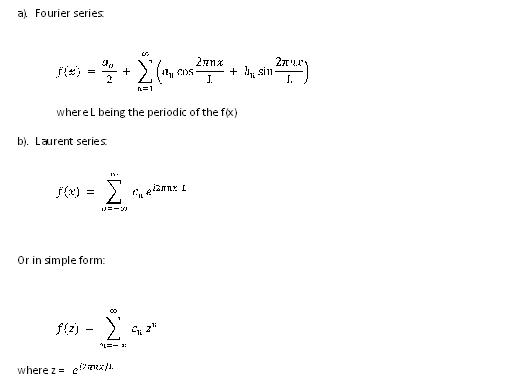The asymmetry and its associated diversity that we
observe today was the result of symmetry breakings which occurred in the early
stage of the cosmos. In the beginning, a), the conditions
were very different from those prevailing today, they were symmetric. The
spatial dimensions as we know today did not yet exist; all dimensions were
inherently temporal. However, as those temporal dimensions were yet undivided,
there was no past, present b) and future.
At those conditions, the energy c) was unstable and tended
to break into its positive and negative components. When it happened, the
associated 4-spacetime (cosmos) d) was split into two parts creating an
interface (3-hypersurface) in between the two. The dimensions across the
interface transformed into spatial; leaving the dimensions outside it remained
intact e). Space,
therefore, was born.
The two opposing energies f) perpetually
generated sort of 4-lights (quantum fields) piercing through the interface
(space) inducing secondary 3-(classical) fields which permeated and propagated
across the interface (Figure-1A). As the quantum fields hit the interface, the
strongest of them (Higgs fields) generated bright sparks which immediately
disappeared as the opposite fields annihilated them (Figure-1B).
The fundamental particles as we know are in reality
nothing but these quantum-sparks which perpetually appear and disappear at the
interface. As those quantum fields hit the entire surface of the interface and
penetrate it only a short distance (across through the thickness of the space),
they seem to us (who live in such interface/3-space) as eternal, omnipresent
and invisible objects that can create and annihilate quantum particles.
Minkowski 1, g) brilliantly fused the space and time
into its undifferentiated state and brought back the spacetime into its
original condition. However, then, something wrong happened. Instead of
bringing the spacetime back into its symmetrical condition, Einstein2assumed that such unification did not make the
temporal and spatial dimensions equivalent. Einstein failed to recognize that
the asymmetry as we see today was the result of the spacetime symmetry
breaking. This blunder has hampered the progress of physics for more than one
hundred years now.
On the discovery of the four-dimensional spacetime,
Einstein3 commented:
“The non-mathematician is seized by a mysterious shuddering when he hears of
four-dimensional things, by a feeling not unlike that awakened by thoughts of
the occult.” No wonder, even after one hundred years of experience dealing with
such spacetime, physicists are still bewildered and fail to recognize that
their chaotic spacetime model does not represent the post symmetry breaking we
observe today.
Supersymmetry Breaking and Multidimensional Worlds
The symmetry breaking of the 4-spacetime as we previously described was only one of the long series of successive symmetry breakings. It was the last of the long chain of a successive splitting of a higher-dimensional spacetime into its lower-dimensional parts.
To make it clear, let’s take the ambient 10-spacetime as a start. As this 10-spacetime broke its supersymmetry, a 9-hypersurface came into being along with its associated temporal dimension, t7. The latter, in turn, was split creating a smaller 8-hypersurface and its associated time, t6 and so forth. This series of splits continued resulting in successive creations of the spacetimes in descending order of their dimensions and ended when the 3-space came into being along with its associated time t1. A total of seven worlds h) have successively come into being with their own individual time, ti, light and its respective speed, ci, Planck constant, hi, and “gravitational” constant, Gi.

We can depict those seven worlds in term of their
relative dimensionality (Figure-2.) or pictorially described as concentric
spheres whose dimensions are larger outwards, in which the innermost layer is
the 3-space with all of its solar system, stars, galaxies and super-galaxies
(Figure-3A).
It is worthy to note that this picture may clarify
the exact physical meaning of the ancient cosmology. For hundreds of years,
people had wrongly considered this configuration as the geocentric cosmology in
which the earth was at the center of the universe (Figure-3B). Even now, modern
physicists fail to properly grasp the multidimensionality of the seven heavens
described in the ancient cosmology 4.
Notes:
a.
It is the
relative beginning, not the beginning of time.
b. The
notation of spacetime given for the cosmos at its original state is misleading
as it gives the impression as it was asymmetrical from the beginning. It would
be more appropriate if we use the notation world, cosmos or more technically
[metric] manifold.
c. Energy in
its entirety (4-energy); to avoid misunderstanding it would be more appropriate
if we use the ancient notation: eon or
simply eon. The energy as we know is merely its
superficial property (3-energy).
d. There was
no space, as space and the present time are different aspects of the same
thing.
e. This
symmetry breaking is analogous to the phenomenon which occurs in the separation
of two immiscible liquids, such as oil and water. In the body of the liquids,
the cohesive forces are symmetric exerting equally in all directions. At the
interface, however, such symmetry is broken because of unbalanced force
exerting at the interface. As the system is in equilibrium, the potential energy known as interfacial
tension counter the net unbalance force. In terms of coordinate geometry, we
may say that the interfacial tension differentiates the dimensions across the
interface ("superficial" dimensions) from those of the original.
f.
The
relativistic energy is composed of two opposite components as expressed in E2 = m2c4 + p2c2
g.
Minkowski
died one year only after the discovery, leaving confusion on his discovered
object (spacetime)’s structure.
h.
The
ancients called such worlds seven heavens.
References:
1.
Einstein,
A. et al.: " The Principle of Relativity," Dover Publications, Inc.,
New York, 1952, p. 75.
2.
Einstein,
A.: " The Meaning of Relativity," Princeton University Press, Fifth
Edition, New Jersey, 1954, p. 31
3.
Einstein,
A.: "Relativity," Crown Publishers Inc., Fifteenth Edition, New York,
1952, p.55
4.
Hawking,
S.: "A Brief History of Time," Bantam Books, London, 1989, p. 3.











